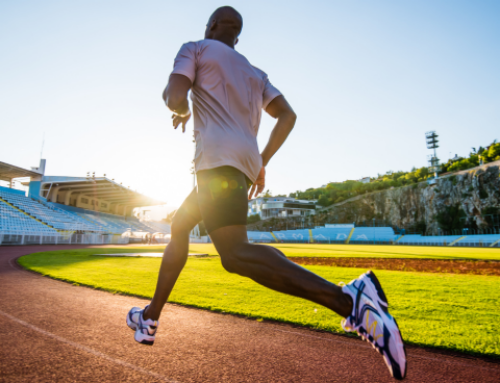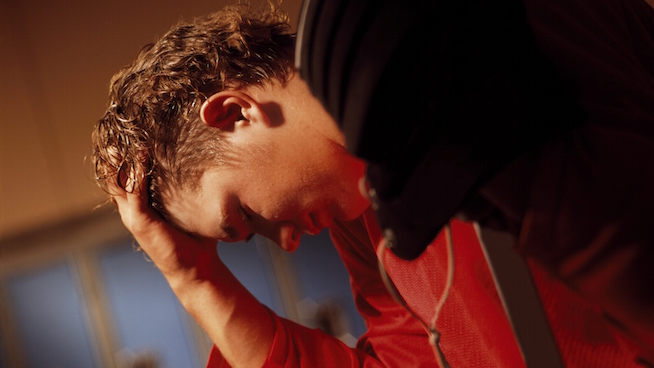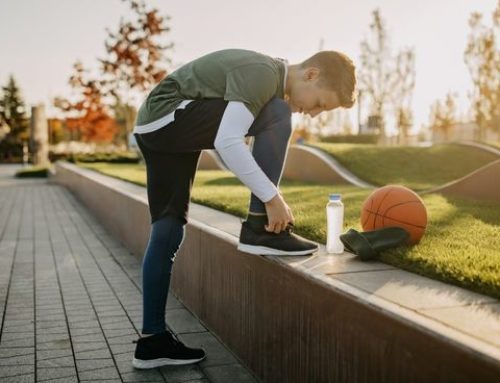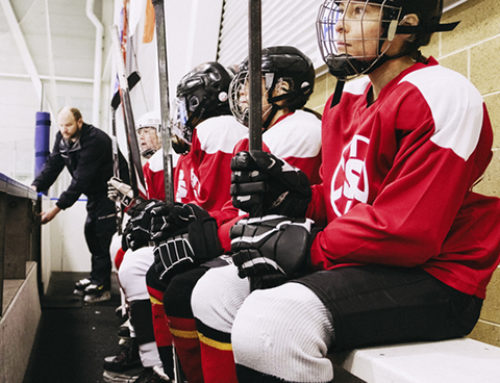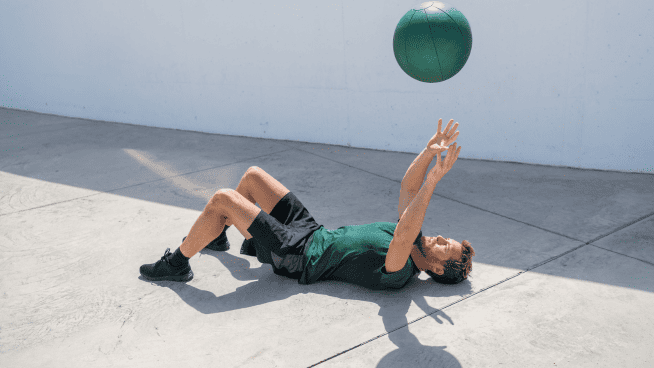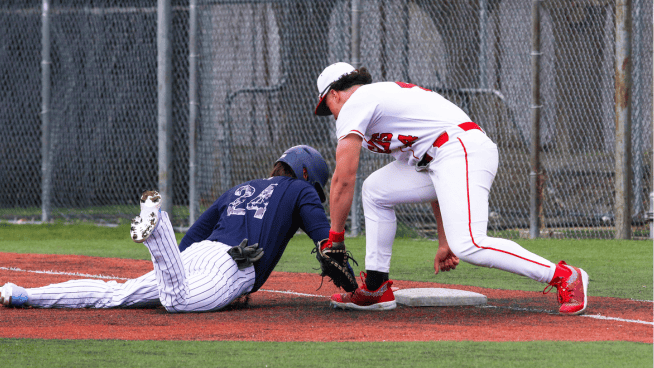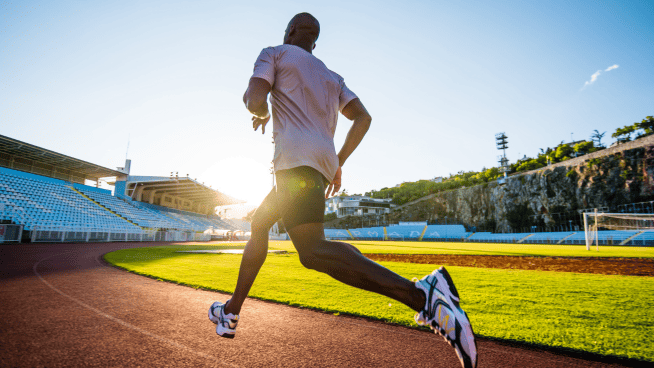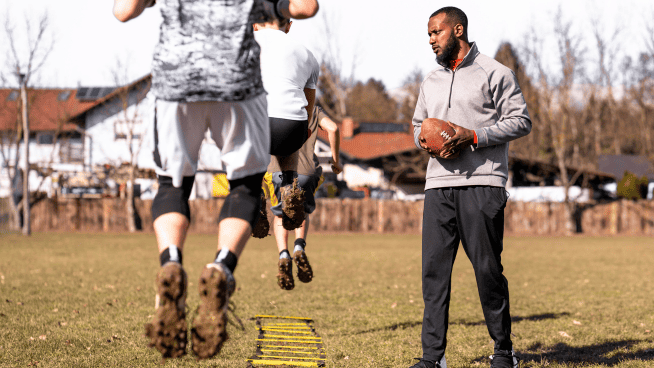Use This Mental Hack to Improve Your Warm-Up
I hear the term “movement pattern” on a daily basis, and in my clinical experience, I’ve heard many patient’s stories of a movement pattern that took them forever to do well:
-
Proper Snatch Technique
-
Proper Running Gait
-
Proper Footwork
Funny how these skills seem so simple, but for some people they take a lifetime to improve.
The phrase “correcting a movement pattern” has been tossed around a lot over the past 10 years. Trainers and coaches cue a movement to make your lifts safer and more efficient. Chiropractors and physical therapists also discuss correcting movement patterns to decrease pain or injury.
If you’ve had issues changing your movements, you’re not alone.
Correcting knee cave is one example of a movement that most active people have been told to correct in their squats, lunges or gait. Another is people with back pain who’ve been told by their therapist to correct a breathing pattern.
These seem simple, but for some, it can take forever to make them automatic.
Perhaps we are missing something?
What if the “Perfect Practice makes Perfect” model doesn’t work when it comes to correcting a movement pattern?
This article will explore the use of Brain Derived Neurotrophic Factor (BDNF) to improve our body’s ability to retain movement corrections.
BDNF is a naturally occurring protein in our body that assists in the process of “rewiring” the brain. The technical term for “rewiring” is neuroplasticity. Neuroplasticity isn’t a new concept, but it explains how our body learns new skills, like playing an instrument or walking again after suffering a stroke. When we’re young, our central nervous system is more malleable, but that doesn’t mean we can’t teach old dogs new tricks.
Creating spikes in our BDNF production improves our body’s ability to learn new tricks—like proper squatting technique or diaphragmatic breathing. A Reactive Maximal Effort Warm-up is a good way to spike it.
What is a Reactive Maximal Effort Warm-up?
We know that BDNF production increases with acute bouts of exercise, but the addition of a “reactive” aspect adds other factors that also increase production and ultimately, retention of a movement correction.
-
Uncertainty
-
Social Enrichment
Uncertainty has been shown to increase BDNF production; think about how happy you are if you win a few dollars on a lottery ticket!
Social Enrichment can also increase production. All we need now is to find warm-up activities that include all three factors.
These are going to sound ridiculous but they include all three:
-
A game of tag
-
Light-hearted wrestling
-
Spike ball, with some running involved
OK, that last one was a stretch, but we are only brainstorming. All three examples have the critical aspects needed to increase BDNF production.
How long will the effect last?
Incorrectly, my personal impression was that this type of warm-up needed to take place right before the exercise—like a typical warm-up. It turns out that’s not the case at all. There is a window of a few hours according to Dr. Michael Lovich, a chiropractic functional neurologist, located in Boston, Massachusetts. He talks all about it on the Performance Place Sports Care Podcast .
This means you don’t need to look silly at the gym! Just running around with your dog a few hours before you go the gym or the rehab clinic will do the trick.
What else can improve BDNF production for targeted neuroplasticity?
-
Intermittent Fasting
-
Clean Eating
-
Sun Exposure
-
Omega-3 Fatty Acids
Do I think spiking BDNF through Reactive Maximal Effort Warm-ups is the supreme answer? No, not at all. The real magic happens with great coaching and cueing through movements. And this narrow window for accelerated learning could go either way! Neuroplastic changes can be helpful to your goals, but if you practice poor form in that window of time, you’re simply ingraining poor form at a faster rate. The bottom line is to use it, but do so wisely with the correct advice and supervision.
I hope this stimulates some thought and opens up a conversation with your fitness and healthcare professionals!
Reach out to me with any questions and subscribe to my podcast for more juicy info on related sports injury topics.
Works cited can be found at Performance Place Sports Care. For my training and performance tips, make sure to tune into my podcast.
READ MORE:
[cf]skyword_tracking_tag[/cf]RECOMMENDED FOR YOU
MOST POPULAR
Use This Mental Hack to Improve Your Warm-Up
I hear the term “movement pattern” on a daily basis, and in my clinical experience, I’ve heard many patient’s stories of a movement pattern that took them forever to do well:
-
Proper Snatch Technique
-
Proper Running Gait
-
Proper Footwork
Funny how these skills seem so simple, but for some people they take a lifetime to improve.
The phrase “correcting a movement pattern” has been tossed around a lot over the past 10 years. Trainers and coaches cue a movement to make your lifts safer and more efficient. Chiropractors and physical therapists also discuss correcting movement patterns to decrease pain or injury.
If you’ve had issues changing your movements, you’re not alone.
Correcting knee cave is one example of a movement that most active people have been told to correct in their squats, lunges or gait. Another is people with back pain who’ve been told by their therapist to correct a breathing pattern.
These seem simple, but for some, it can take forever to make them automatic.
Perhaps we are missing something?
What if the “Perfect Practice makes Perfect” model doesn’t work when it comes to correcting a movement pattern?
This article will explore the use of Brain Derived Neurotrophic Factor (BDNF) to improve our body’s ability to retain movement corrections.
BDNF is a naturally occurring protein in our body that assists in the process of “rewiring” the brain. The technical term for “rewiring” is neuroplasticity. Neuroplasticity isn’t a new concept, but it explains how our body learns new skills, like playing an instrument or walking again after suffering a stroke. When we’re young, our central nervous system is more malleable, but that doesn’t mean we can’t teach old dogs new tricks.
Creating spikes in our BDNF production improves our body’s ability to learn new tricks—like proper squatting technique or diaphragmatic breathing. A Reactive Maximal Effort Warm-up is a good way to spike it.
What is a Reactive Maximal Effort Warm-up?
We know that BDNF production increases with acute bouts of exercise, but the addition of a “reactive” aspect adds other factors that also increase production and ultimately, retention of a movement correction.
-
Uncertainty
-
Social Enrichment
Uncertainty has been shown to increase BDNF production; think about how happy you are if you win a few dollars on a lottery ticket!
Social Enrichment can also increase production. All we need now is to find warm-up activities that include all three factors.
These are going to sound ridiculous but they include all three:
-
A game of tag
-
Light-hearted wrestling
-
Spike ball, with some running involved
OK, that last one was a stretch, but we are only brainstorming. All three examples have the critical aspects needed to increase BDNF production.
How long will the effect last?
Incorrectly, my personal impression was that this type of warm-up needed to take place right before the exercise—like a typical warm-up. It turns out that’s not the case at all. There is a window of a few hours according to Dr. Michael Lovich, a chiropractic functional neurologist, located in Boston, Massachusetts. He talks all about it on the Performance Place Sports Care Podcast .
This means you don’t need to look silly at the gym! Just running around with your dog a few hours before you go the gym or the rehab clinic will do the trick.
What else can improve BDNF production for targeted neuroplasticity?
-
Intermittent Fasting
-
Clean Eating
-
Sun Exposure
-
Omega-3 Fatty Acids
Do I think spiking BDNF through Reactive Maximal Effort Warm-ups is the supreme answer? No, not at all. The real magic happens with great coaching and cueing through movements. And this narrow window for accelerated learning could go either way! Neuroplastic changes can be helpful to your goals, but if you practice poor form in that window of time, you’re simply ingraining poor form at a faster rate. The bottom line is to use it, but do so wisely with the correct advice and supervision.
I hope this stimulates some thought and opens up a conversation with your fitness and healthcare professionals!
Reach out to me with any questions and subscribe to my podcast for more juicy info on related sports injury topics.
Works cited can be found at Performance Place Sports Care. For my training and performance tips, make sure to tune into my podcast.
READ MORE:
[cf]skyword_tracking_tag[/cf]

